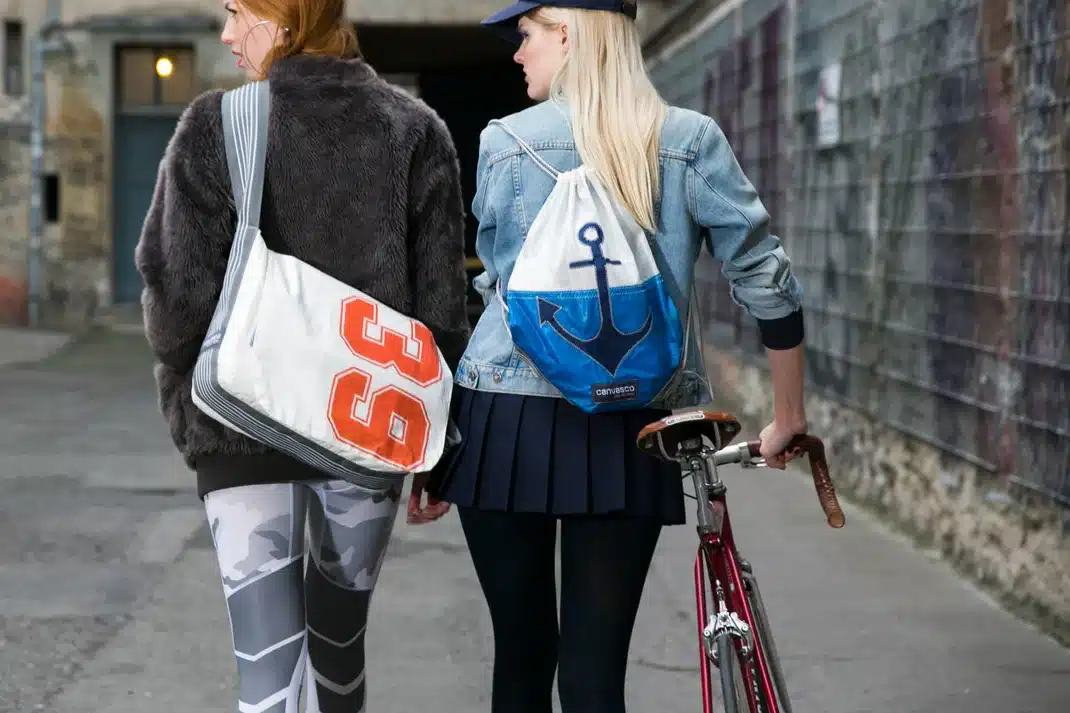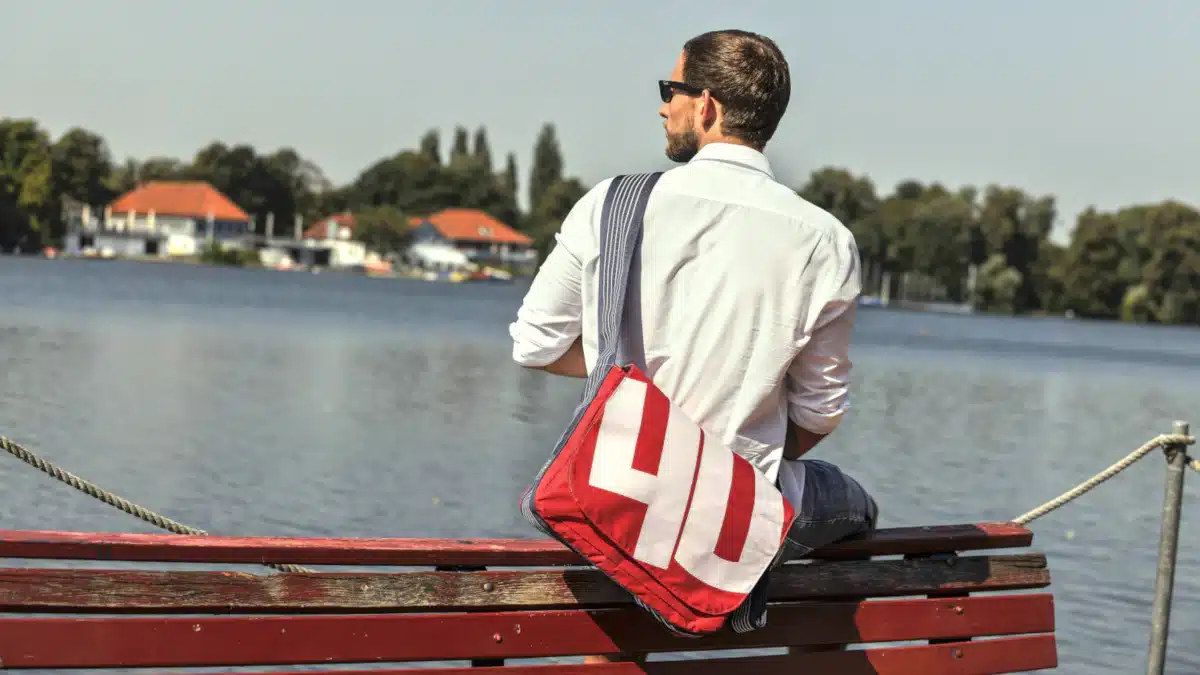Fashion – a world of creativity, self-expression, and ever-changing trends. But behind the glamorous runways lies an inconvenient truth: the industry is one of the biggest polluters on the planet. Fast fashion, with its rapid production cycles, leaves behind mountains of textile waste, pollutes waterways with toxic dyes, and contributes significantly to carbon emissions. But change is on the horizon. A growing number of brands are stepping up to challenge the status quo, proving that style, sustainability, and social impact can go hand in hand. We focus here on unique bag brands that make a change. We dive into the story of one of these trailblazers, Canvasco, a German social business that turns discarded sails into trendy bags while giving women in prison a second chance at life. At the end of this article, you will find more inspiration and links to bags for good! But now to Canvasco:
It all started in 2002 with Jan-Marc Stührmann, a former sports and politics teacher from Bremen. His life took a surprising turn when he worked on a project for a sailing magazine. As he visited various marinas, he noticed a peculiar sight: stacks of old sails gathering dust, waiting to be discarded. Each sail had once navigated the world’s oceans, carrying stories of adventure. Now, they were just waste.
That’s when the idea struck. What if these sails could get a new purpose? What if they could be transformed into stylish, durable bags instead of ending up in landfills? With a few prototypes stitched together for friends, Canvasco was born. The first bags were sold at flea markets and small boutiques. The demand quickly grew, and today, Canvasco produces around 1,200 unique pieces each month – every bag carrying a bit of maritime history.
Sustainability You Can Carry
For Canvasco, sustainability isn’t a buzzword – it’s the foundation of the entire business. The brand follows a circular economy model, ensuring minimal environmental impact at every stage of production.
- 🌱 80% Upcycled Materials: The primary fabric is reclaimed sailcloth, sourced from local sailmakers and yacht clubs within a 150-kilometer radius of the company’s headquarters.
- 🔄 Zero-Waste Mindset: Offcuts and leftover materials are turned into accessories like keychains or patches instead of being discarded.
- 📦 Plastic-Free Packaging: Canvasco uses recycled cardboard and avoids plastic in all packaging materials.
This thoughtful approach not only reduces landfill waste but also decreases the carbon footprint associated with the production of new textiles. Each bag is a reminder that sustainable choices can be stylish, too.
Canvasco’s mission extends beyond environmental sustainability. Since its early days, the company has partnered with the women’s prison in Vechta. Here, incarcerated women are employed to sew the bags by hand. This isn’t just about production efficiency – it’s about giving people the chance to turn their lives around.

© Canvasco
Maria (name changed for privacy) never imagined she’d one day make high-quality fashion accessories. After a troubled youth and a string of bad decisions, she ended up serving time for fraud. Her self-confidence was shattered, and she saw little hope for the future. Then she heard about the Canvasco workshop.
“At first, I was nervous,” Maria recalls. “I didn’t know how to sew or even use a sewing machine.”
But she gave it a try. With patient guidance, she learned to cut fabric, stitch seams, and assemble bags. Slowly but surely, her confidence grew. For the first time in years, she felt proud of herself.
“The moment I saw one of the bags I made displayed in a store window, I almost cried,” she says.
After her release, Maria found a job at a small textile company. Today, she also volunteers with a local reintegration program, helping other formerly incarcerated women find a path back into society.
Breaking the Cycle: Why Work Matters in Prison
Canvasco’s collaboration with the prison in Vechta is about more than creating beautiful products. It’s about reducing recidivism. Studies show that inmates who gain job skills and real work experience during their sentence are significantly less likely to reoffend. The Canvasco workshop provides:
- Skill Development: From pattern design to stitching techniques, the women learn practical skills that are valuable in the textile industry.
- Soft Skills: Punctuality, teamwork, and a sense of responsibility become part of their daily routine.
- Hope and Dignity: Earning a wage and contributing to the production of high-quality products helps rebuild self-esteem.
Canvasco founder Jan-Marc Stührmann explains: “We didn’t just want to make cool bags; we wanted to make a difference in people’s lives. Everyone deserves a chance to start over.”

© Canvasrepublic, Canvasco
Canvasco’s bags are more than just accessories. They are stories – of ocean adventures, of women reclaiming their lives, and of a company that dares to challenge how fashion operates. In a world where fast fashion often prioritizes profit over people and the planet, Canvasco stands as a beacon of hope.
The brand shows that style doesn’t have to come at the expense of the environment or human dignity. Instead, it proves that businesses can thrive while giving back – by upcycling waste into beautiful products and by providing meaningful work opportunities to those who need them most.
Carry Change with You
The next time you sling a Canvasco bag over your shoulder, remember what it represents: resilience, creativity, and the belief that everyone deserves a second chance. Fashion can indeed shape the world – one upcycled sail and one transformed life at a time.



